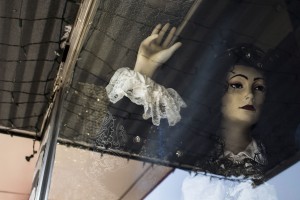Part 1:
1) The images below are two images that I photographed for my Visual Studies 1311 class. The main question centered around this assignment was, “How do we create an image?”. Our assignment was to create a collection of photographs were required to be related to the Gestalt theory, which states that something can be perceived as more than its parts, but as a unified whole. This theory contains principles and elements, such as grouping, containment, continuation, and proximity, which were to be within our images. These images were also limited to be taken on South Congress Avenue.
The assignment also entailed technical components: we had to shoot in RAW, convert our files to TIFF and JPEG, and use Adobe Bridge (where we categorized by keywords and narrowed our images down by collections) and Lightroom. We could also utilize Photoshop to edit the images.
Communication and rationality was also a component of the project. We had to present and explain our images in front of the class for our in-class critique.
2) I first approached answering the question with an open mind throughout the shoot; I wasn’t exactly sure of where my concepts would be placed or created. However, once I began taking pictures of the merging of reflections and objects in the windows I found that I could express character, emotion, and the achieve the principles of Gestalt. I continued to develop my ideas in the post-production phase, and I worked closely with editing contrasts and clarity.
Part 2, Self-Critique:
For this part, will be critiquing the work titled “Irresolute”.
1) I believe the strongest aspects of this work are the interesting shapes and angles created within the image. The lines of the lights and the reflection of the lights also move the viewer’s eye across the image.
2) The weakest aspect of this image may be the images darkness and lack of simplicity (there is a lot “going on”). The viewer may become lost with the competing elements within the image. Although the angles of the image are a part of what makes the image interesting, they also may not be as dynamic as they could be.
3) Through photographing the image from a wider angle, the composition may become more complete (with the bottom part of the reflection taking up more of the image and the mannequin becoming more centered, contained, and united in the composition).
4) As an overall project, I tried to integrate and develop conceptual depth within all of my images. However, I could definitely improve the selection and order of my images by editing which images to put in with a more critical and direct mindset. My concepts overlapped one another through each image; however, they did not tie in together as influentially as they could have because of the number of images I had. (Professor Joe Vitone even posed the question, “How many words do you need to tell a story?” in relation to images during my critique, which helped me grasp the significance of editing).
5) My camera and post-production techniques and knowledge are sort of limited, and some of my photographs may reflect that. The angles of images and the formation of the visual elements within a frame could use work.
6) Additional Notes: The blog post where I explain, analyze, and reflect on my work can be reached via. This post also contains all of my photographs.


Leave a Reply